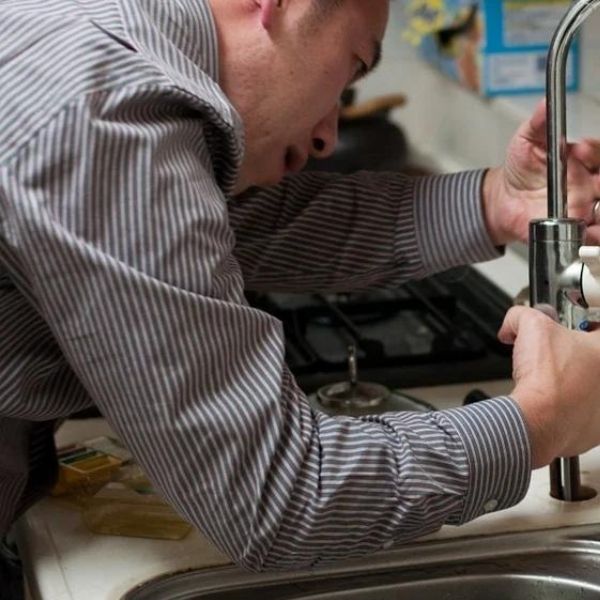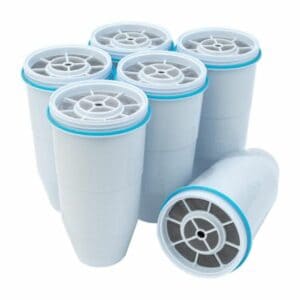Reverse Osmosis System Introduced
Reverse Osmosis, or RO, is a water filtration system that is used to filter out impurities from drinking water. It works by using pressure to force water molecules through a semi-permeable membrane, leaving behind any contaminants and minerals. This process produces clean drinking water that is safe and tastes great.
RO systems are becoming increasingly popular in home use due to their ability to remove up to 99% of dissolved solids and other contaminants from your tap water. This type of filtering removes harmful substances such as lead, arsenic, nitrates, chlorine, and bacteria while preserving beneficial minerals like calcium and magnesium.
They are also relatively easy to install with minimal maintenance required throughout the year. Overall, Reverse Osmosis systems provide excellent filtration for your home’s drinking water supply at an affordable price point.
How to Install a Reverse Osmosis System – A Step-by-Step Guide
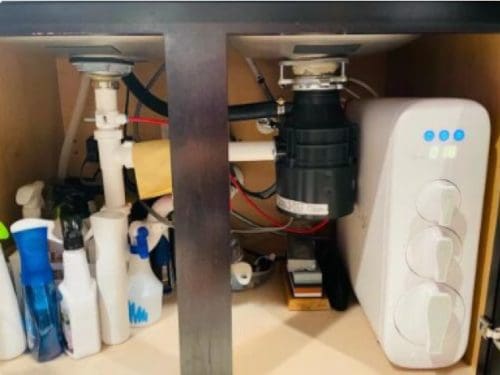
Installing or changing Reverse Osmosis filters in your home can be an effective way to improve the quality of your drinking water. Reverse osmosis is a process that involves forcing water through a membrane to filter out mineral contaminants, leaving you with clean, safe drinking water.
It is essential to properly install your reverse osmosis system in order for it to function correctly and efficiently. Here are the steps for installing a reverse osmosis system:
Gather Tools & Parts
Make sure you have all the necessary tools and parts before you begin. These include:
Parts
- RO faucet adapter kit
- Tubing to connect the RO unit to your plumbing
- Pressure gauge
- Water filter handle
- Sediment filter
- Membrane housing
- Mounting bracket
- Valves
Tools:
- A set of wrenches
- Screwdrivers
- A pair of channel locks or pliers
- Clamps
- A drill
- Tubing cutters
- Teflon tape
Planning The Location
When it comes to installing a reverse osmosis system, the first step is to plan out the location. It is important to consider what type of environment the system will be in and how much space there is for its components.
Additionally, you must think about where the drain line will run and whether any accessories are needed in order to complete the installation.
The ideal spot for a reverse osmosis system should have enough room for all of its parts as well as easy access to power outlets and plumbing lines. Placing it near a sink or water heater can help make connecting these components easier. Additionally, if possible, try to keep pipes running horizontally since this helps reduce the chances of backflow or leaks during pressure changes.
By taking proper planning into account when installing a reverse osmosis system, you can make sure that everything runs smoothly from start to finish.
Preparation
After deciding on the location for installing your best Reverse Osmosis water filter, you need to make sure you have all of the recommended tools and parts on hand. This means having items such as wrenches, screwdrivers, pliers, tubing cutters, and clamps ready to go.
Additionally, it’s important to make sure you have the appropriate filters for your particular type of system; this includes sediment filters and carbon block or granular activated carbon filters. Finally, don’t forget about any faucet installation (valves) that may be needed to control water flow through your RO system.
Installation Process
Step 1: Connect the In-Line Valve to the Water Supply Line
The first step in installing your reverse osmosis water filter system is to connect a hose clamp to the end of the water supply line. Then, attach an in-line cold water supply valve to the other end of the hose. This tank valve allows you to control the flow of water through your RO system by turning off and on the water supply.
Step 2: Position The Tank
Next, you will position the storage tank. First, you should place your tank on a sturdy table or countertop that has enough room to hold the filter system and allow for easy access to all of the valves. The storage tank is heavy, so you will need to make sure that it is stable and secure.
Step 3: Adjust The Filter Assembly
The next step is to adjust the filter assembly. You will need to determine what kind of filter you are using and how much water pressure you have in your home. The pump that comes with your RO system can handle pressure as high as 60 psi, but you will want to reduce it to between 30 and 40 psi.
You can adjust the filter assembly by turning one or more of the screws on top of the tank. The number of screws and their placement will vary depending on the type of filter you have.
Step 4: Connect The Water Line
The next step is to connect the cold water line to the filter. You can do this by removing the cap on the filter tank, inserting the female end of the hose into it, and tightening it down with a screwdriver.
Step 5: Attach Tubes To The Valve
To attach the tubes to the valve, simply unscrew the hose coming from the filter and screw on the tube that goes to your refrigerator.
Step 6: Connect The Drain Line
The drain pipe or drain saddle is attached to the bottom of the filter and should be screwed into the hole on the floor where you want the water to drain.
Step 7: Test The System
To test the system, turn the power on and push the “on” switch. The water should flow easily into your refrigerator.
Step 8: Adjust the Pressure
If the water pressure is too low, look at the filter gauge to see if you need to increase or decrease the setting.
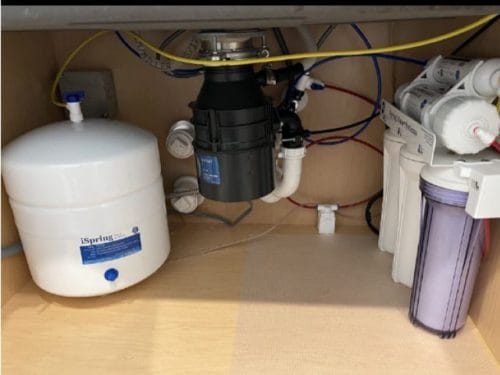
Maintenance Tips
Regular maintenance of a reverse osmosis filtration system is essential for keeping the water clean and healthy. This type of filtration process can last for many years with proper care and attention. To ensure your reverse osmosis system stays in top condition, here are some maintenance tips to follow:
- Check the filters regularly to make sure they are still functioning correctly. Replace any filters that have been used for longer than six months as these will no longer be effective at removing contaminants from your water supply.
- Sanitize the storage tank annually to prevent bacteria from building up over time. This should be done by flushing out the tank with a chlorine solution or citric acid and then refilling it with fresh water afterward.
- In addition, check the pressure gauge on the storage tank to make sure it is still working correctly. If you notice that it has become stuck, then it will need to be replaced as this can cause serious problems with your reverse osmosis system.
- Consider installing a water softener if you live in an area where the water is hard. This will reduce the amount of calcium and magnesium in your drinking water, which can lead to stains on dishes and clothing.
- Also, consider putting a pre-filter on your reverse osmosis system. This is a small filter that removes larger particles from the water before it reaches the reverse osmosis membrane. This will extend the life of your reverse osmosis system and make it more efficient. It can also remove things like bacteria.
DIY VS Calling a Professional
You can install an RO system yourself but it is best if you call a professional who can help you with installing your system. They can give you professional advice on which system will work best for you, and they can also help you to install it. In this way, you will also save money in the long run as you will not require any system maintenance for a long time.
FAQs
How long does it take for the water to be purified?
Typically, it takes between 2-4 hours to fill the average RO tank. You also have to consider the size of the system you have installed and how much water is passing through the RO system. The larger the system, the longer it takes for the water to be purified.
What is the cost of installing an RO system?
On average, the installation cost of an RO system is $150 – $400. The cost of installation depends on your budget and how much space you need for a storage tank.
How long does an RO system last?
The life span of an RO system depends on the brand you purchase. Most RO systems have a lifespan of 5 to 7 years.
How do I maintain my RO system?
Always refer to the manufacturer’s manual when it comes to your RO system’s maintenance. Depending on your RO system, it may have three, four, or five stages. So be mindful of your system’s filters and make sure to replace them whenever necessary.
What is the difference between a standard RO system and a premium RO system?
In general, a standard RO system has a smaller membrane surface area while a premium RO system has a larger membrane surface area. A larger membrane surface area means that the water produced is softer and purer.
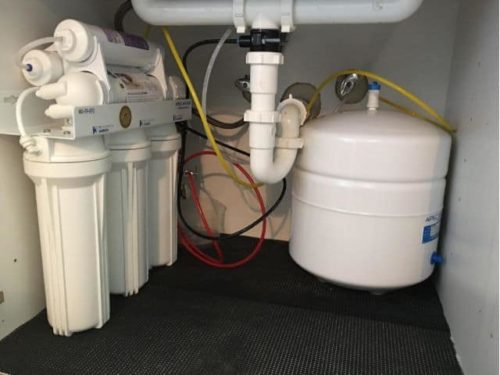
Conclusion – How To Install a Reverse Osmosis System
Installing a reverse osmosis system is not as hard as you may think. In fact, it is quite simple if you follow the steps outlined above. However, it is best if you hire a professional to do the installation for you. That way, your RO system will be installed properly and will last for years to come without any leaks or problems.
In addition, it is important to properly maintain your water system with cleaning and descaling. If you do not maintain your reverse osmosis system, it will lose its effectiveness and will not be able to produce pure water for you.
